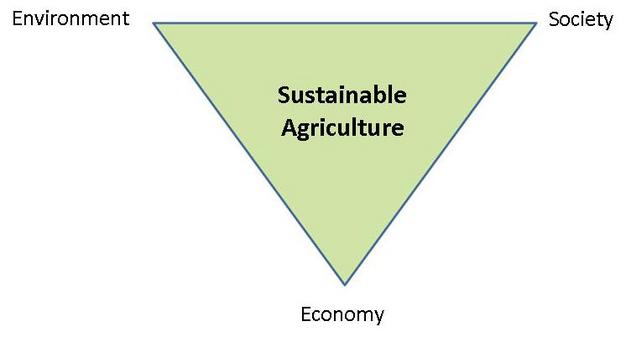Which is Most Likely to Occur if We Continue With Current Practices in Farming and Resource Usage
Agriculture has changed dramatically since the end of World War II. Food and fiber productivity has soared due to new technologies, mechanization, increased chemical use, specialization, and government policies that favored maximizing production and reducing food prices. These changes have allowed fewer farmers to produce more food and fiber at lower prices.
Although these developments have had many positive effects and reduced many risks in farming, they also have significant costs. Prominent among these are topsoil depletion, groundwater contamination, air pollution, greenhouse gas emissions, the decline of family farms, neglect of the living and working conditions of farm laborers, new threats to human health and safety due to the spread of new pathogens, economic concentration in food and agricultural industries, and disintegration of rural communities.
A growing movement has emerged during the past four decades to question the necessity of these high costs and to offer innovative alternatives. Today this movement for sustainable agriculture is garnering increasing support and acceptance within our food production systems. Sustainable agriculture integrates three main goals – environmental health, economic profitability, and social equity (Figure 1). A variety of philosophies, policies and practices have contributed to these goals, but a few common themes and principles weave through most definitions of sustainable agriculture.

Figure 1
Sustainable agriculture gives equal weight to environmental, social, and economic concerns in agriculture.
© 2011 Nature Education Courtesy of Brodt et al. All rights reserved. ![]()
Agricultural sustainability rests on the principle that we must meet the needs of the present without compromising the ability of future generations to meet their own needs. Therefore, long-term stewardship of both natural and human resources is of equal importance to short-term economic gain. Stewardship of human resources includes consideration of social responsibilities such as working and living conditions of laborers, the needs of rural communities, and consumer health and safety both in the present and the future. Stewardship of land and natural resources involves maintaining or enhancing the quality of these resources and using them in ways that allow them to be regenerated for the future. Stewardship considerations must also address concerns about animal welfare in farm enterprises that include livestock.
An agroecosystems and food systems perspective is essential to understanding sustainability. Agroecosystems are envisioned in the broadest sense, from individual fields to farms to ecozones. Food systems, which include agroecosystems plus distribution and food consumption components, similarly span from farmer to local community to global population. An emphasis on a systems perspective allows for a comprehensive view of our agricultural production and distribution enterprises, and how they affect human communities and the natural environment. Conversely, a systems approach also gives us the tools to assess the impact of human society and its institutions on farming and its environmental sustainability.
Studies of different types of natural and human systems have taught us that systems that survive over time usually do so because they are highly resilient, adaptive, and have high diversity. Resilience is critical because most agroecosystems face conditions (including climate, pest populations, political contexts, and others) that are often highly unpredictable and rarely stable in the long run. Adaptability is a key component of resilience, as it may not always be possible or desirable for an agroecosystem to regain the precise form and function it had before a disturbance, but it may be able to adjust itself and take a new form in the face of changing conditions. Diversity often aids in conferring adaptability, because the more variety that exists within a food system, whether in terms of types of crops or cultural knowledge, the more tools and avenues a system will have to adapt to change.
An agroecosystem and food system approach also implies multi-pronged efforts in research, education, and action. Not only researchers from various disciplines, but also farmers, laborers, retailers, consumers, policymakers and others who have a stake in our agricultural and food systems have crucial roles to play in moving toward greater agricultural sustainability.
Finally, sustainable agriculture is not a single, well-defined end goal. Scientific understanding about what constitutes sustainability in environmental, social, and economic terms is continuously evolving and is influenced by contemporary issues, perspectives, and values. For example, agriculture's ability to adapt to climate change was not considered a critical issue 20 years ago, but is now receiving increasing attention. In addition, the details of what constitutes a sustainable system may change from one set of conditions (e.g., soil types, climate, labor costs) to another, and from one cultural and ideological perspective to another, resulting in the very term "sustainable" being a contested term. Therefore, it is more useful and pertinent to think of agricultural systems as ranging along a continuum from unsustainable to very sustainable, rather than placed in a sustainable/unsustainable dichotomy.
Source: https://www.nature.com/scitable/knowledge/library/sustainable-agriculture-23562787/
0 Response to "Which is Most Likely to Occur if We Continue With Current Practices in Farming and Resource Usage"
Post a Comment